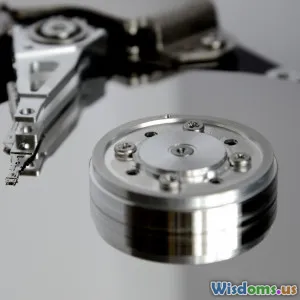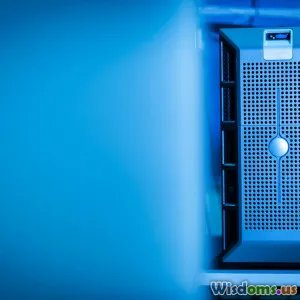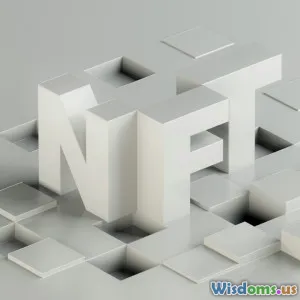
Choosing The Right NoSQL Database For Your Project
16 min read Clear guide to selecting the ideal NoSQL database, including comparisons, real-world examples, and decision-making tips for successful modern software projects. (0 Reviews)
Choosing The Right NoSQL Database For Your Project
Modern application development demands speed, agility, and resilience—requirements that have propelled NoSQL databases into the spotlight. Yet, with dozens of NoSQL options on the market, how do you pick the right one for your project? The stakes are high; a poorly mismatched database can mean bottlenecks, mounting costs, or even complete project failure. Whether you're architecting an IoT platform, designing an e-commerce system, or scaling an analytics pipeline, your choice of NoSQL database will have profound consequences.
In this article, we’ll unravel the intricacies of NoSQL database selection. With actionable insights, practical comparisons, and real-world scenarios, you'll be equipped to confidently choose the database that truly aligns with your project.
Table of Contents
- Introduction: The NoSQL Revolution
- Understanding The NoSQL Landscape
- Types of NoSQL Databases & Core Use Cases
- Key Factors for NoSQL Database Selection
- Comparing Popular NoSQL Databases: Real-World Perspectives
- A Step-by-Step Process to Make The Right Choice
- Cautionary Tales: Pitfalls to Avoid
- Expert Advice: Quotes & Insights
- Summary Checklist
- Conclusion: Future-Proof Your Project with Smart Choices
Introduction: The NoSQL Revolution
In 2016, Netflix hit a technical crisis. Its legacy relational databases just couldn’t cope with the millions of user requests surging through globally dispersed servers. “Traditional SQL couldn’t scale horizontally the way we needed,” wrote Netflix Engineer Sid Anand. By shifting to NoSQL solutions, Netflix embraced true elasticity—empowering everything from their instant recommendations to global content delivery.
Big names like Netflix, Facebook, Amazon, and Google have bet big on NoSQL for similar reasons. But you, a product architect or developer, face a daunting menu: MongoDB, Cassandra, Couchbase, DynamoDB, Neo4j, Redis, and more. How do you select, from this crowded buffet, the one that will guarantee both performance and future flexibility?
Let’s illuminate this choice with clarity and real-world conviction.
Understanding The NoSQL Landscape
What Is NoSQL?
'NoSQL' collectively refers to databases that are "Not Only SQL"—they don’t adhere to the rigid table, row, and schema requirements imposed by traditional relational databases.
NoSQL came into prominence to solve three overarching challenges:
- Scalability: Modern data volumes (think petabytes daily for IoT, social feeds, ad tech) require horizontal scaling, easily achieved in NoSQL.
- Flexibility: Applications need to store everything from timestamps to nested JSON payloads and evolving metadata.
- Performance: NoSQL is designed to minimize query overhead and enable microsecond-level reads and writes.
Fact Check
- Gartner estimated in 2023 that nearly 80% of new enterprise applications leverage NoSQL technology for at least part of their data storage.
Why Not Just Use SQL?
Relational (SQL) databases remain powerful—especially when strong ACID (Atomicity, Consistency, Isolation, Durability) transactions, mature tooling, and strict data integrity are mandatory.
But if your data is:
- Semi-structured (e.g., user profiles with personalized preferences)
- Rapidly changing
- Vast in scale and geographically distributed then traditional SQL systems can become expensive, complex, and limited.
Types of NoSQL Databases & Core Use Cases
NoSQL isn’t a monolith. There are four primary types—each with its own design goals, strengths, and best-fit scenarios.
Document Stores
Examples: MongoDB, CouchDB
- Structure: Store data as documents (typically JSON or BSON) with flexible schemas.
- Best For: Applications where records vary in structure—e.g., CMS, catalogs, user profiles.
- Case Study: eBay powers several catalogs and metadata systems with MongoDB to accommodate rapidly evolving product attributes across millions of listings.
Key-Value Stores
Examples: Redis, Amazon DynamoDB, Riak
- Structure: Simple key-to-value mapping, like an ultra-fast dictionary.
- Best For: Caching, session storage, leaderboards, real-time analytics where speed is paramount.
- Case Study: Twitter relies on Redis to cache tweet timelines and speed up feed rendering, enabling low-latency delivery to hundreds of millions of users.
Column-Family Stores
Examples: Apache Cassandra, HBase
- Structure: Similar to RDBMS but with column groups instead of rigid tables; optimized for fast writes and analytics on massive datasets.
- Best For: Time-series data, IoT sensor data, logging/metrics, transaction histories.
- Case Study: Uber employs Cassandra to store geospatial trip data, easily scaling past tens of millions of writes per second.
Graph Databases
Examples: Neo4j, ArangoDB, Amazon Neptune
- Structure: Store data as nodes (entities) and relationships (edges), perfect for traversing interconnected information.
- Best For: Social networks, recommendation engines, fraud detection, network/IT analysis.
- Case Study: eBay’s shipping route optimization leverages Neo4j to dynamically route packages based on relational data between warehouses, hubs, and delivery providers.
Key Factors for NoSQL Database Selection
Choosing blindly is a recipe for future pain. Here are the crucial decision points you must scrutinize:
Data Structure and Application Needs
- Question: Is your data best modeled as documents, a series of values, wide-column tables, or interconnected graphs?
- Example: A dating app’s user profiles (varying in preference fields) align with MongoDB’s schema flexibility, while its matchmaking algorithm (navigating social connections) may demand a graph database.
Performance, Scalability, and Consistency
Performance applies to throughput (transactions per second) and latency (query speed). Check:
- Data Volume: Does your app write millions of records a day?
- Reads vs Writes: Which dominates? E-commerce may spike during sales, analytics apps are often write-heavy.
- Scalability: Do you anticipate rapid regional expansion? Pick tech that enables effortless horizontally scaling.
- Consistency vs Availability: BASE (Basically Available, Soft state, Eventually consistent) vs. strong consistency. Think Cassandra (eventual) vs. DynamoDB (configurable).
Example Insight: “Pinterest chose DynamoDB for its high availability and predictable performance under unpredictable user traffic, even though it required changes to how we handle consistency.” — Pinterest Engineering Blog
Query Complexity and Flexibility
- Does your use case require deeply nested queries, joins, or aggregate analytics?
- Relational joins are not natively supported in most NoSQL engines.
- Some document stores embed analytic capabilities, others rely on external frameworks (Spark, Flink).
Compare: MongoDB offers powerful aggregation pipelines natively; DynamoDB often requires integrating with AWS Glue or Redshift for complex queries.
Community and Ecosystem
- Why it matters: A vibrant ecosystem means better documentation, more developers, third-party tools, and long-term survivability.
- Examples: MongoDB boasts comprehensive documentation, massive open-source contributions, and robust connectors for languages from Python to Go. Niche or proprietary databases may lag in these.
Operational Considerations: Cloud, Support & More
- Cloud Native: AWS DynamoDB and Azure Cosmos DB are cloud-native. MongoDB Atlas offers multi-cloud support. Check service region availability and SLA.
- Support: Consider vendor-managed vs. self-hosted, and support plan maturity.
- Cost/Ease Of Management: Pay-as-you-go vs. heavy infrastructure provisioning. Factor in backup, restore, monitoring, scaling, and compliance costs.
Fun Fact: Gartner’s 2024 report suggests operational overhead is a primary reason 51% of organizations opt for managed NoSQL services, despite higher direct costs.
Comparing Popular NoSQL Databases: Real-World Perspectives
MongoDB
Strengths:
- Flexible schema and powerful aggregation framework
- ACID transactions from v4.0 onwards
- Thriving community (top Stack Overflow tags)
- Ecosystem: Connectors for major programming languages, BI, and analytics
Limitations:
- Joins across large datasets are less efficient than SQL
- Scaling write-intensive workloads requires proper sharding configuration
Seen In: Content management systems, mobile apps, CRM, analytics dashboards.
Cassandra
Strengths:
- Linear horizontal scalability—add nodes for instant throughput increase
- Optimized for write-heavy, globally distributed systems
- Tunable consistency for balance between speed and reliability
Limitations:
- Queries must be carefully designed; no ad hoc querying as with RDBMS
- More complex operational overhead, especially for newcomers
Seen In: Telecom records, ride-hailing apps, IoT time-series ingestion, financial ledgers.
Redis
Strengths:
- Lightning-fast reads/writes (sub-millisecond latency)
- In-memory with optional disk persistence for durability
- Native support for structures (hashes, sets, lists)
Limitations:
- Best suited for transient, volatile data
- Complex analytics, deep querying not its forte
Seen In: Caching layers, gaming leaderboards, pub/sub messaging, rate limiting for APIs.
Neo4j
Strengths:
- Natural fit for problems where relationships are central
- Optimizations for graph traversals, shortest path, recommendations
- Cypher query language is expressive and approachable
Limitations:
- Not ideal for high-volume, simple-key lookups
- Storage can become expensive with extremely large graphs
Seen In: Knowledge graphs, fraud detection, logistics optimizations, social network analysis.
A Step-by-Step Process to Make The Right Choice
-
Define Data & Query Patterns Clearly
- Sketch out schemas and simulate application queries
- Test: Do you need dynamic fields? Do you need immediate global consistency?
-
Prioritize Requirements: Qualitative and Quantitative
- Which matters more: Speed, scale, consistency, cost, analytics?
- Weight each requirement to avoid scope creep.
-
Shortlist Candidates
- Match use cases to the four NoSQL types above
- Use community resources (Stack Overflow, GitHub) and benchmark reports (e.g., DB-Engines Rankings)
-
Prototype/Test-Drive at Small Scale
- Build basic CRUD functions and stress-test under pseudo-load
- Check real query performance, ops fit, cost in your context
-
Evaluate Operational Overhead Prospects
- Simulate common operations: scaling, failover, node recovery
- Assess admin interface, monitoring tools, backup mechanisms
-
Get Stakeholder and Developer Buy-in
- Will your team be comfortable and productive with this technology?
- Is there training or support needed?
-
Plan For The Future
- Is your pick a passing trend or an industry-anchored solution?
- Can you “escape” or migrate if needs change?
Cautionary Tales: Pitfalls to Avoid
- Copying Big Tech: Don’t implement Cassandra just because Netflix did. Their use case—petabyte-scale, global streaming—is extremely specialized.
- Underestimating Migration Pain: Changing databases later often means full data migration, deep codebase refactoring, and downtime. Choose wisely up front.
- Ignoring Query Needs: If your business teams need SQL-like, cross-document joins or OLAP (analytics), a pure NoSQL choice might cripple insight delivery. Blend with SQL or use hybrid platforms.
- Chasing Shiny Tech: Beware the temptation to pick the newest database to “future-proof” your stack, only to discover weak support or compatibility years later.
- Under-Scoping Operational Complexity: Take stock of how much time and skill your DevOps team will need—managing clusters isn’t for everyone, and costs spiral quickly with misconfiguration.
Expert Advice: Quotes & Insights
“Start by solving for the reality of your application's usage patterns, not for arbitrary scale,” says Martin Fowler, software architect and author. “The technology must serve your data and your team—not the other way around.”
“In our migration to MongoDB, we saved 40% of our weekly engineering time by eliminating rigid schema migrations, which used to stall development for days or weeks.” – Yvonne Chu, CTO of a SaaS fintech company.
Tip: Many successful mid-sized companies employ polyglot persistence—using two or more databases. For example: MongoDB for customer-facing data, Redis for caching, and a graph database for recommendation logic.
Summary Checklist
Before committing, review:
- Have we mapped our data models and queries?
- Do we understand our growth projections?
- Have we compared at least two candidate NoSQL types?
- Does our team/culture fit the operational demands?
- Are backup, migration, and rollback strategies clear?
Conclusion: Future-Proof Your Project with Smart Choices
NoSQL offers freedom—schema flexibility, effortless scaling, blazing performance. But this freedom also demands discernment and clarity on your project's precise needs.
Let Netflix, Amazon, and others inspire you—but let your own data volumes, usage patterns, and team readiness guide you. Prototype early, iterate based on evidence, and never hesitate to ask community experts for advice.
Selecting the right NoSQL database is less about chasing trends, and more about strategic alignment. Get it right, and your platform will thrive today and scale elegantly tomorrow.
Ready to embark? Sketch your use case, map your queries, shortlist options, and test small. The right NoSQL choice will pay dividends in agility and performance for years to come.
Rate the Post
User Reviews
Other posts in Cloud Computing
Popular Posts

















